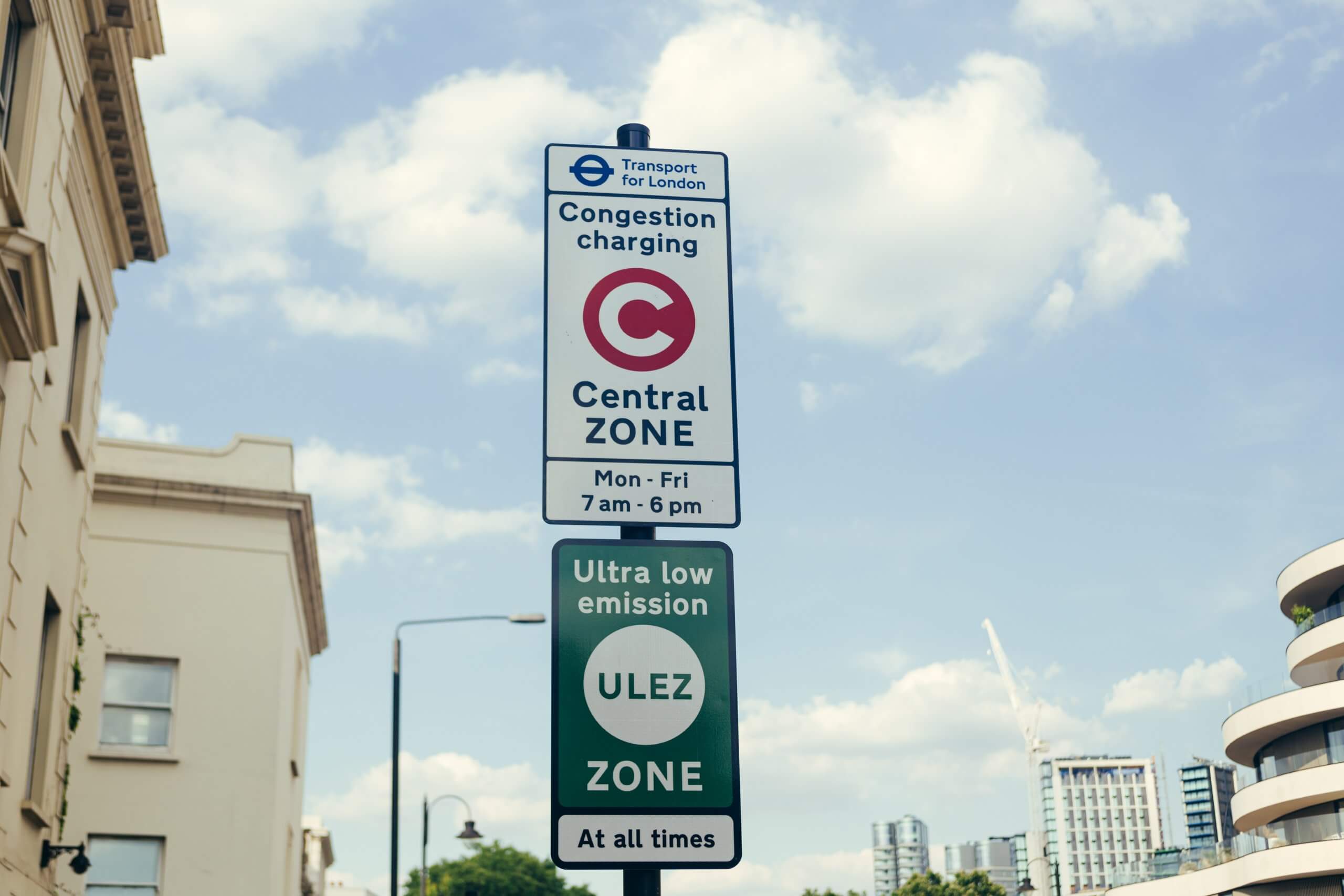In order to combat vehicle-related greenhouse gas emissions, the United Kingdom will ban the sale of vehicles fueled by diesel and gasoline in 2030. And, in 2035, they will ban the sale of hybrid cars. These bans will encourage the transition to zero-emission vehicles. Ultimately, the country’s goal is to reach net-zero by 2050. However, their efforts to reduce vehicle exhaust emissions don’t stop there. Additionally, various cities around the United Kingdom have introduced clean air zones. Clean air zones are an effective method of vehicle-related air pollution reduction.
What Are Clean Air Zones?
Clean air zones are implemented in areas where air pollution is a threat to public health and the environment. Vehicles that pollute excessively are not allowed to enter clean air zones unless they pay a charge.
Additionally, there are low emission zones and zero-emission zones. Similarly, low emission zones restrict or deny access to vehicles that pollute excessively. These zones favor plug-in hybrid vehicles and zero-emission vehicles among other transportation methods. Zero-emission zones strictly allow zero-emission vehicles, such as hydrogen-fueled vehicles, only.
Of course, pedestrians and bicyclists also have unrestricted access to all of the forenamed zones!
Why Are They Necessary?
Well, we can show you better than we can tell you. Let’s review a couple of key stats.
- Typical passenger vehicles emit roughly 4.6 metric tons of carbon dioxide each year.
- Ambient air pollution contributes to an estimated 4.2 million deaths per year.
- More than half of nitrogen oxides in the air in the United States are due to transportation emissions.
These facts and statistics are egregious. Vehicle emissions are deteriorating public health and the health of our planet. Clean air zones are absolutely necessary in order to combat air pollution produced by vehicles. They improve air quality, which in turn improves public health and the health of our planet.
What Are the Benefits of Clean Air Zones?
Clean air zones benefit children, the elderly, immunocompromised individuals and everyone in between! Clean air is essential to human health. By reducing or eliminating the number of vehicles in an area, air quality drastically improves. Why? The air pollutants produced by vehicle exhaust are toxic to humans.

Particulate matter, carbon dioxide, ground-level ozone, volatile organic compounds and other air pollutants are linked to various respiratory illnesses, cancer and premature death (among other health issues). Additionally, clean air zones reduce congestion in populated areas, encourage the use of public transportation and zero-emission vehicles and promote an active lifestyle that includes walking or biking. There truly is no downside to a clean air zone!
Should the United States Create Zero-Emission Zones?
Absolutely! In fact, Santa Monica, California will be the first city in the United States to accomplish this. In collaboration with the Los Angeles Cleantech Incubator, the city will establish a voluntary zero-emissions delivery zone.
The purpose of the zero-emissions delivery zone is to:
- provide a blueprint and best practices for zero-emission zones;
- reduce air pollution and congestion;
- and increase economic opportunity by providing individuals and small businesses access to zone benefits.
The zone will cover one square mile, which is home to 15,850 residents. The zone encompasses two prominent commercial districts, Downtown Santa Monica and Main Street. Approximately 28,900 people work in these districts.
For those that know the area, the clean air zone will stretch from Wilshire Boulevard to Lincoln Boulevard and Dewey Street to the Pacific Ocean. The zone will include the following zip codes: 90401, 90404 and 90403.
 Public Health: It is a well-known fact that outdoor air pollution increases indoor air pollution. Let’s take a look at how indoor air pollution impacts public health →
Public Health: It is a well-known fact that outdoor air pollution increases indoor air pollution. Let’s take a look at how indoor air pollution impacts public health →According to the World Economic Forum, the number of delivery vehicles in inner cities will increase by 36% until 2030 without effective intervention. Furthermore, urban last-mile delivery emissions and congestion will increase by 30%.
Clearly, it is in the United States’ best interest to establish more clean air zones, low emission zones and zero-emission zones.
Clean Air Zones Offer a Unique Solution
It’s crucial to implement effective methods of intervention before air pollution becomes an unsolvable problem. Without clean air, humans cannot exist. When multiple cities, states and countries work together, a world with minimal air pollution becomes a reality. Clean air zones are one creative and necessary air quality solution to continue pursuing.



